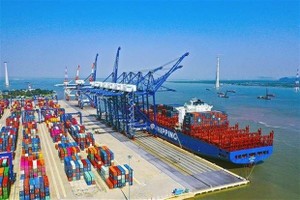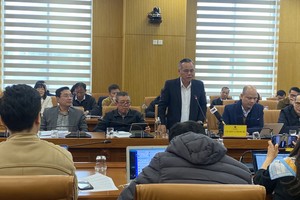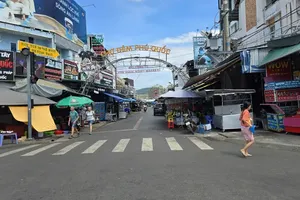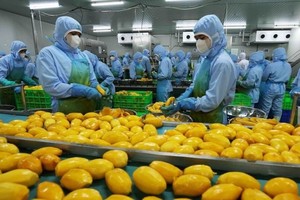 Stockpiling rice for export in the Mekong Delta. (Photo: SGGP)
Stockpiling rice for export in the Mekong Delta. (Photo: SGGP)
The prices of 5-percent broken rice of India and Pakistan in the past week still ranged from $388-$392 to $438-$442 per ton, $40-$100 per ton lower than Vietnamese rice.
On June 1, a rice exporter in the Mekong Delta said that the decrease in export prices of Vietnamese rice also made domestic exporters stressed. Enterprises should offer good prices wisely, rather than rushing to lower them, which would affect the export prices of Vietnamese rice.
On June 1, a rice exporter in the Mekong Delta said that the decrease in export prices of Vietnamese rice also made domestic exporters stressed. Enterprises should offer good prices wisely, rather than rushing to lower them, which would affect the export prices of Vietnamese rice.
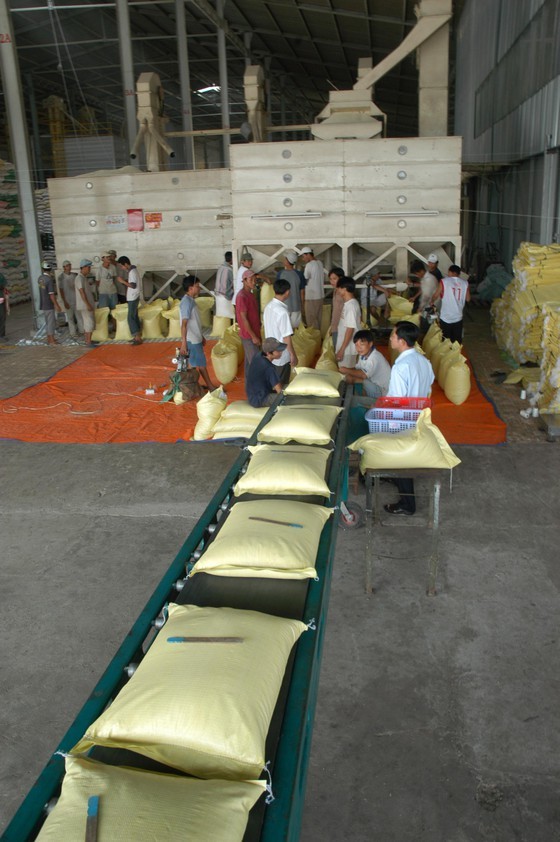 A rice production line in the Mekong Delta. (Photo: SGGP)
A rice production line in the Mekong Delta. (Photo: SGGP)
The business community reacted strongly to the import of cheap rice from India by some domestic enterprises for re-export. Some enterprises said that this is a way of doing business hand-to-mouth and for short-term profit, which can affect the reputation of the recently established Vietnamese rice brand.
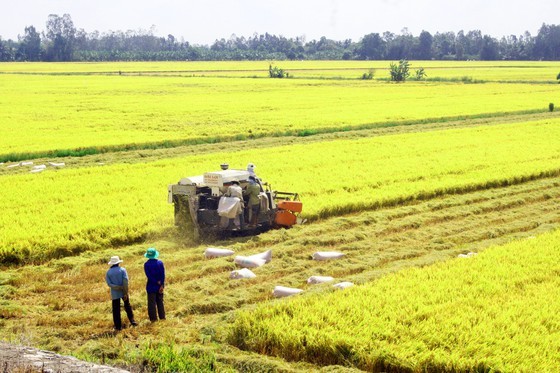 Mekong Delta farmers harvest rice by combine harvesters. (Photo: SGGP)
Mekong Delta farmers harvest rice by combine harvesters. (Photo: SGGP)
Associate Prof-Dr. Duong Van Chin, Former Deputy Director of the Mekong Delta Rice Research Institute, said that the prices of long-grain white rice of India and Pakistan were lower than those of Vietnam because they are rice varieties with high amylose content, so the rice is hard. Recently, Vietnamese long-grain white rice has a selling price in the global market that is not inferior to Thai and Indian rice in the same segment, thanks to the selective breeding of new rice varieties that have achieved certain results recently. These rice varieties are extremely diverse, can be grown in many different ecological regions, in many crops in the year, give good quality of rice, and are favored by many importing countries.
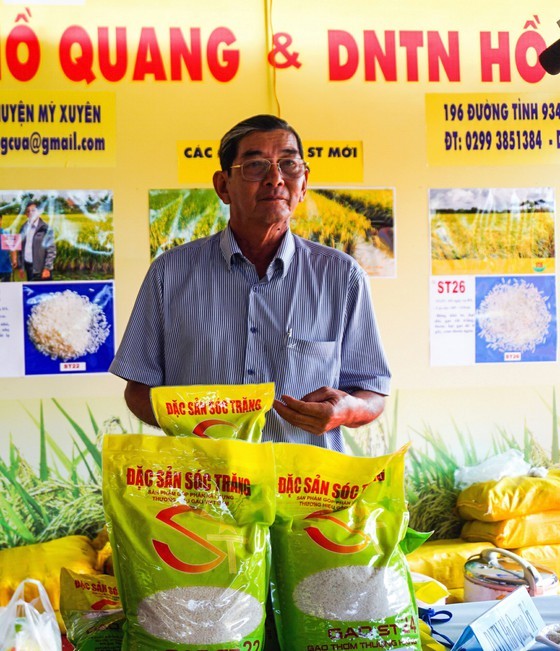 Agricultural engineer Ho Quang Cua, the inventor of Vietnam's ST25 rice. (Photo: SGGP)
Agricultural engineer Ho Quang Cua, the inventor of Vietnam's ST25 rice. (Photo: SGGP)
According to Associate Prof.-Dr. Duong Van Chin, Vietnam is currently developing a set of internationally recognized standards for the group of long-grain white rice and the group of fragrant white rice. Vietnam should choose 4-5 rice varieties with superiority in terms of cultivation and quality to build the brand and attach the Vietnam Rice logo. The rice varieties that need attention in this group include OM 5451, OM 6976, and OM 18. For the premium white fragrant rice segment, some rice varieties that have won high prizes in some rice competitions, such as Loc Troi 28 and ST 25, should be chosen to build the brand for this segment.





